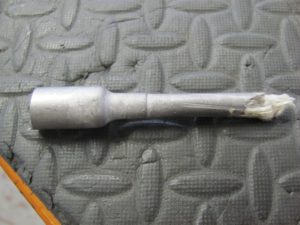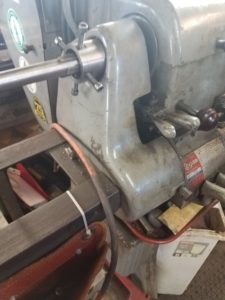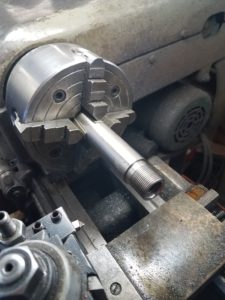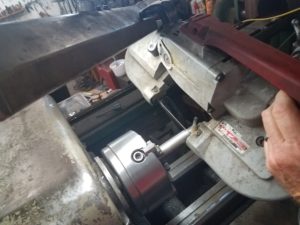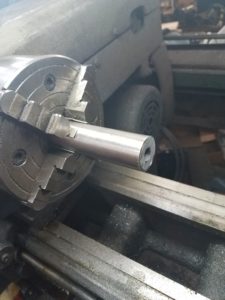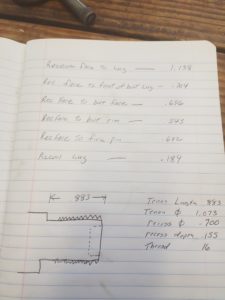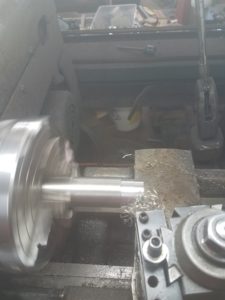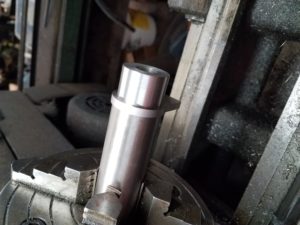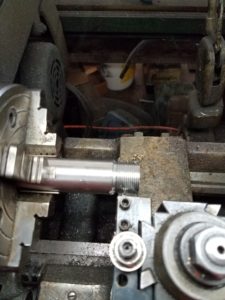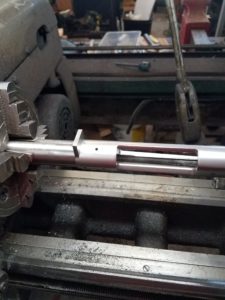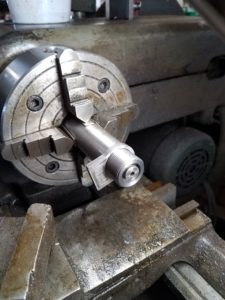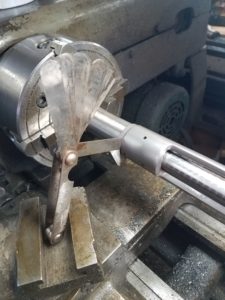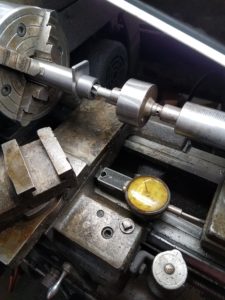Working with Gunstocks
Working with gunstocks comes with the territory for the gunsmith. For some it is what they wish they could do all the time, others might be happier if guns didn’t have stocks. Personally I enjoy stock work but I don’t seem to make much money when I do. It just seems that there are not many shortcuts when it comes to quality stock work. Maybe having a business plan would be a good idea so you would know what to avoid and what to seek. Of course if you love the smell of walnut and the beauty of a feathered crotch (I’m speaking of a type of walnut!) you have found your place in life and will soon be famous for things of beauty. Let’s break our work down and look at the jobs that frequently come in the gun shop.
Fitting guns is a term used to explain changing the stock dimensions to fit a particular shooter. This line of work requires a thorough understanding of shotgun shooting as well as the gunsmithing skills involved in changing drop, length of pull, pitch and cast off. These specialist are usually in attendance at major shooting events and do a brisk business while there. Many times the fitter will have a try gun which is a shotgun with an adjustable stock so the shooter can adjust and try until he finds the perfect combination of drop, pull and cast. Then the dimensions are measured and recorded so the shooters personal gun can be modified. Attending one of these events is always beneficial and can open up opportunities for learning as well as future business.
Recoil pads and sling swivels are two of the jobs that show up frequently in the shop. While these two jobs seem simple they are high in nuisance value and anything but perfect work will show up and make you look like a novice or worse. Both of these jobs also carry the risk of damaging a fine stock so a little extra for insurance might be a good idea.
The sling swivels must be installed on center and secure but without any chance of splitting. Choose a drill that slightly smaller than the core of the screw you will be installing. Counter sink this hole at least 3/8” with a drill that matches the outside diameter of the screw. This helps prevent the screw from pulling up the wood as it tries to pull itself into the wood. Apply steady pressure downward while starting the screw for best results. For the swivels that have a nut on the back like on the forearm make sure it doesn’t contact the barrel. Also make sure to secure the swivel in the nut so it cannot possibly come out. This is a potential disaster when the swivel breaks and the rifle swings around while the shooter grabs to stop it. A drop of locktite or epoxy on the threads should do the trick.
Most of the time before you can fit a recoil pad you have to cut the stock to length or at least flatten the surface. Seems everybody has a different method for this and you will have to pick something you are comfortable with. For sure it is a lot easier to cut than put back so make certain of your measurements. Length of pull is measured from the trigger to the middle of the pad. Pitch is easier to determine by placing the gun butt down against the wall or vertical straight edge and measuring the muzzle deviation from the vertical. Most guns have a little negative pitch. This allows the butt to slide onto the shoulder without the top edge dragging and makes for more consistent gun mount. Measure other stocks and try them out on the customer. After all the idea is to fit the gun to the customer. I use masking tape and mark my cut with a marking scribe that holds a pencil and cut with a very fine cut hand saw. By letting the saw do the work with minimum pressure and holding both parts until the cut is done I get excellent results. Cutting through the tape help to minimize the saws effect on the finish and make for a smoother edge. Find the cutting method you prefer and practice on old stocks. You want to be confident before that customer comes in with the Superposed grade 12 and wants it 5/16 shorter with 1 3/8 pitch.
I cringe when I read some of the old instructions for installing recoil pads. Some of them actually recommend grinding the pad while it is on the stock. Never try this on a customer’s stock. There are several jigs that allow you to set the angle on the pad and hold it securely for grinding while the pad is attached to the jig. Practice on old stocks by cutting off the stock and refitting the old pad. The more pads you grind and fit the better your skills. This is a much safer way to learn as opposed to wrecking a customer’s stock. Don’t forget to seal the end of the freshly cut stock. The customer will thank you after he spends the day hunting in the rain. Just go slow and allow the sander to cut the pad. If you hurry heat will build and the pad will smear. The finished job should follow the lines of the stock and not have overhang or undercut. Most pad manufacturers have instruction for grinding their pads. They know what works best for their product and their instructions will help you get a great job. If the old screw holes in the stock interfere with alignment of the new pad then drill then out oversize and epoxy a hardwood dowel in the hole. After epoxy has hardened cut off flush and start over with new wood.
It seems that I am seeing more shooters lately seeking recoil reduction with the stock mounted recoil reducers. These are sealed units that have moveable weight inside that distributes the recoil force over a longer time period which takes the peak out of the recoil cycle. If the unit has mercury for the weight remember that the unit only works if the muzzle is pointed up so the mercury is in the back. Don’t put this type in a rifle that will be used from a tree stand. Some of these use the bolt hole already in the stock but you can also drill a hole for it if needed. These are large holes and require careful layout. Additional units can be installed in a recess routed into the forearm under the barrel. This can also balance out the gun but does add a little weight.
Glass bedding is very popular but not very well understood. While I don’t want to write another “how to” about bedding I think it might be more beneficial to go into why. For a rifle to shoot the same spot every time the receiver must rest in the same place in the stock every time. It should be a home without stress but secure enough maintain the gun in this perfect cradle. Before we had epoxy this was really hard to achieve with a wood to metal fit. Wood expands and contracts with the temperature and humidity. Epoxy to the rescue. While liquid it conforms perfectly and hardens to the mirror image of the receiver. Pop out the receiver, trim of the excess, reinstall the missing parts, and you are done. But does it shoot any better?
If the problem was wandering zero or the gun wouldn’t stay sighted in then maybe, but if it didn’t group at all it probably still won’t. For sure epoxy bedding will help and never hurt accuracy it won’t cure problem in other areas. If the problem is a bad barrel then all the epoxy in the world won’t help.
So you have decided to glass bed but which type is best? Do you want to pillar bed? Which type of epoxy? Which release agent? A lot of questions but with a little information you can make the best selection. Select the epoxy that is the easiest to use. I like Acra gel from Brownells. Mixes one to one with plenty of working time and stiff enough to stay put. Spray release from Brownells is the best release agent I ever used. No cleanup, easy to apply and fast. Just don’t forget to use it!

